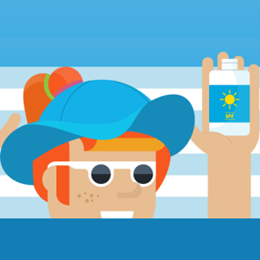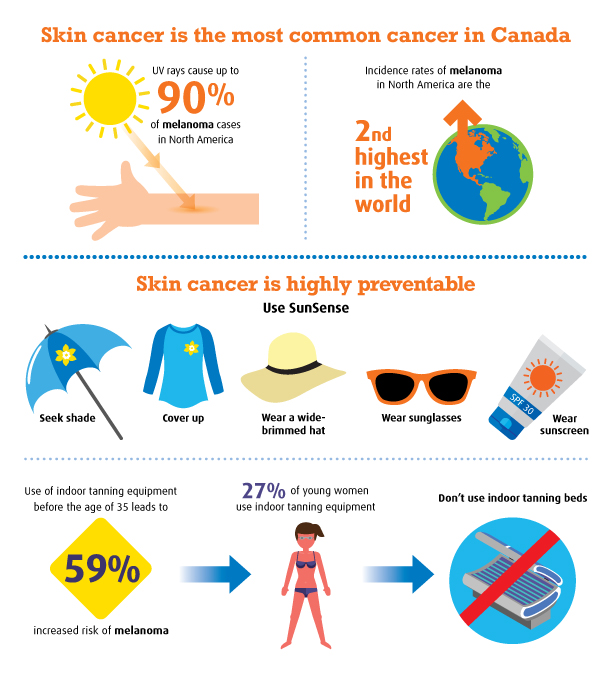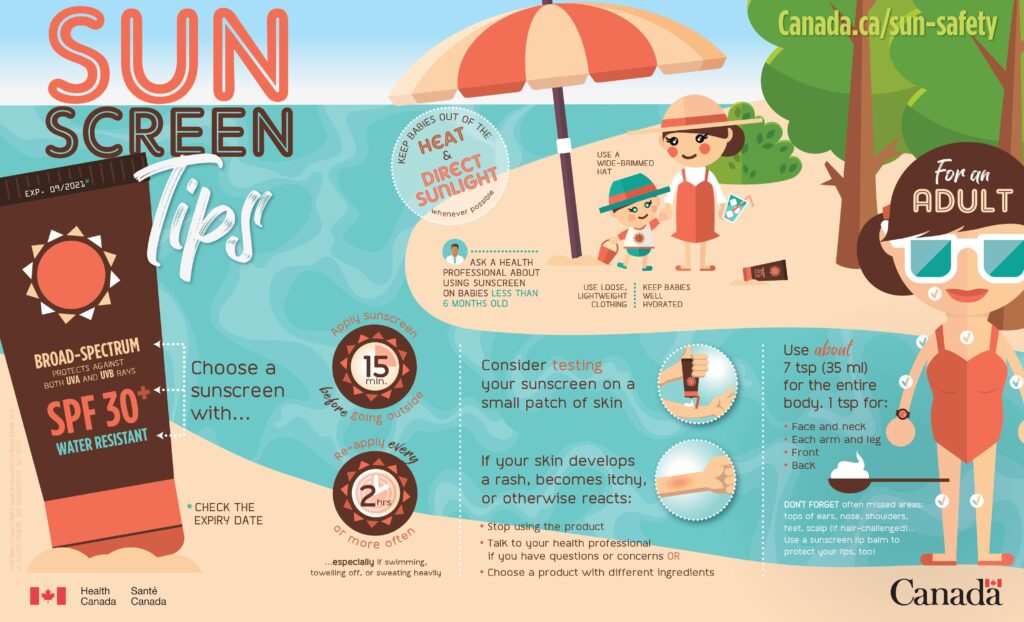
Sunscreens are rated by the strength of their SPF. SPF stands for sun protection factor. A sunscreen’s SPF tells you its ability to screen or block out the sun’s UVB rays. SPF 15 sunscreen blocks 93% of UVB rays. Sunscreen with SPF 30 blocks 97% of UVB rays.
Broad spectrum offers both UVA and UVB protection. Water-resistant means that the product stays on better in water.
Spread evenly. The average adult needs about 2 or 3 tablespoons of sunscreen to cover their body and a teaspoon to cover their face and neck. This is about the size of a golf ball to cover your body every time.
Put sunscreen on your ears, chin and neck even when you’re wearing a hat. Don’t forget your nose, any bald spots, the backs of your hands and the tops of your feet. Check to see how clothing moves when you move – and put sunscreen on the skin that gets exposed.
Sunscreen should always be your first layer of protection.
Spray the product on your hands and then rub it carefully over your face, avoiding your eyes and mouth.
Put it on as soon as you can and reapply often.
A higher SPF doesn’t mean that you can wait before reapplying. Reapply sunscreen throughout the day, especially after swimming, sweating or toweling off – water-resistant sunscreen only works for 40 or 80 minutes, depending on the label. And remember – sunscreens are designed to help protect you when you have to be outside. You still need to protect yourself in other ways too!
Your lips need to be protected too. Be sure to put more on after eating or drinking.
Whatever the weather or season, UV rays are always there! Even if you can’t see the sun, UV rays can pass through the clouds. And in the winter, the sun’s rays reflect off the bright surface of the snow.
Talk to your pharmacist if you need help choosing a sunscreen. Choose one that feels good to you and that you find easy to apply thoroughly.
Always check that the sunscreen is broad spectrum and follow the directions for how much to apply and how often. If you’re not sure that the makeup or moisturizer protects you from both UVA and UVB rays or the packaging doesn’t include directions, you may want to use a broad-spectrum sunscreen along with it.
Sunscreens contain chemicals, and they should not be used after the expiry date because they may not work as well. Sunscreens can be affected by extreme changes in temperature. If it has been frozen or overheated or has changed color or smell, it’s best to throw it out.

